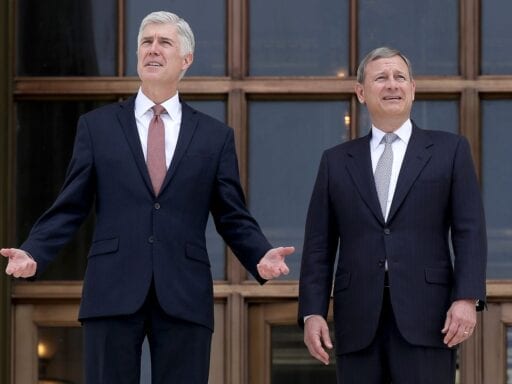Low-income people and minorities are now more likely to go uncounted.
The Supreme Court handed down a brief, unsigned order on Tuesday that is likely to shut down the 2020 census count. Only Justice Sonia Sotomayor dissented publicly from the Court’s order in Ross v. National Urban League, although it is possible that as many as two other justices dissented without making that dissent public.
The case involves a late effort by political appointees to shut down the census count earlier than professionals within the Census Bureau determined that that count can be completed during a pandemic. The practical impact of the Court’s decision is that marginalized groups — including people of color, low-income individuals, and those who live on tribal lands — are especially likely to go uncounted.
As Sotomayor explains in her dissenting opinion, the census count was originally supposed to end on July 31, but the Census Bureau decided to extend that date until October 31 due to the Covid-19 pandemic.
As one high-ranking bureau official explained, “It was ‘ludicrous’ to expect the Bureau to ‘complete 100 percent of the nation’s data collection earlier than [October 31]’ in the middle of a pandemic.”
For several months, political appointees within the Trump administration supported this decision. They even backed legislation that would have extended the December 31 deadline for the Census Bureau to report the full results of the 2020 census to President Trump. But in early August, Commerce Secretary Wilbur Ross abruptly changed course. He announced that the census count would end on September 30, and the administration stopped lobbying Congress to extend the December deadline.
In response to these developments, a lower federal court ordered the Census Bureau to continue counting individuals until October 31 — the date when the count would have ended if Ross hadn’t intervened to shut down the count in September. Now that Ross is no longer bound by this order, he can call a halt to the census count.
The Court’s order halting the census count is consistent with its laissez-faire approach to voting rights
The Court’s one-paragraph order offers no explanation of why a majority of the justices chose to end the count. It doesn’t even purport to be the final word in this litigation. Rather, the Court’s order ending the count merely stays the lower court’s order while this case is fully considered by an appeals court and then potentially appealed to the justices again.
As a practical matter, however, the Court’s order in Ross is likely the final word on the census count. By the time this case is fully litigated in the appeals court (and potentially in the Supreme Court), the census will almost certainly be over and the case will be moot.
Yet, while the Court does not explain its decision, said decision is not particularly surprising. The Supreme Court’s Republican majority has largely called upon the federal judiciary to defer to other government officials in cases asking how the government should respond to the pandemic. And the Court’s majority has shown particular indifference towards voting rights.
As Justice Brett Kavanaugh explained in a recent voting rights opinion, courts should typically defer to “a State legislature’s decision either to keep or to make changes to election rules to address COVID–19.” A similar logic could also apply to a federal Cabinet secretary’s decision about how the census should adapt during a pandemic.
And, make no mistake, Ross is a voting rights case. The census doesn’t simply determine how federal resources are allocated; it also determines how congressional representation and Electoral College votes are allocated among the states. As Sotomayor explains in dissent, “the percentage of nonresponses” during a census “is likely much higher among marginalized populations and in hard-to-count areas, such as rural and tribal lands.”
So the Court’s order in Ross is likely to transfer power away from marginalized communities (that often vote for Democrats over Republicans), and toward wealthier and whiter communities (that are more likely to support Republicans).
If the Trump administration can be believed — and the Supreme Court has caught the administration lying about the census in the past — the impact of the decision in Ross is likely to be marginal. The administration, Sotomayor notes, claims that “over 99 percent of households in 49 States are already accounted for” in the current census count.
But even if the administration is telling the truth, Sotomayor continues, “a fraction of a percent of the Nation’s 140 million households amounts to hundreds of thousands of people left uncounted.” And these households are likely to be disproportionately lower-income and less white than the people who are counted.
Millions turn to Vox each month to understand what’s happening in the news, from the coronavirus crisis to a racial reckoning to what is, quite possibly, the most consequential presidential election of our lifetimes. Our mission has never been more vital than it is in this moment: to empower you through understanding. But our distinctive brand of explanatory journalism takes resources. Even when the economy and the news advertising market recovers, your support will be a critical part of sustaining our resource-intensive work. If you have already contributed, thank you. If you haven’t, please consider helping everyone make sense of an increasingly chaotic world: Contribute today from as little as $3.
Author: Ian Millhiser
Read More



